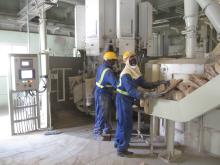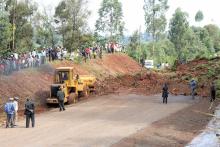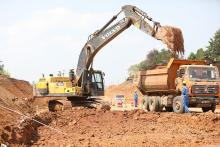
According to Graham Dean, Chryso’s business development director Eastern Africa, the region’s growing investment in construction projects is evident in countries like Kenya, Tanzania and Uganda. While infrastructure development such as roads and railways are mainly driving this growth in Kenya, it is Tanzania’s mining industry and Uganda’s oil sector which are becoming more significant.
“As a key construction product, concrete uses natural materials which are locally sourced,” says Dean. “This might include cement produced from limestone quarried around Nairobi, pozzolana to modify different cement types or quarried aggregates and crushed sands. To achieve the best results in concrete, it is important to understand the variations in what Mother Nature provides to us as raw materials.”
He highlights that concrete admixtures which have been well proven with materials in South Africa, for instance, may not necessarily perform to the same levels with concrete materials from Kenya. Accommodating these variations has required considerable investment in research and technical facilities in East Africa, to ensure customised admixture solutions.
“To resolve the performance differences between regions, Chryso set up a concrete laboratory in Nairobi where we can modify existing formulations,” he explains. “This allows us to design bespoke admixtures for customers, based on their specific requirements and the local materials going into their concrete.”
With its Nairobi office established almost 10 years ago, Chryso has developed the locally based experience and infrastructure to become a trusted partner in the concrete space. The company supplies its admixture solutions not only to large construction companies, specifiers and developers, but also to readymix plants, manufacturers of precast products and specialist applicators of decorative concrete.
As the negative environmental impact of sand mining falls under the spotlight in certain East African countries, CHRYSO is also contributing to more responsible practices in the concrete segment.
“The uncontrolled mining of river sand for concrete in many areas has led to concerns at government level, and an expectation that this practice might be banned in future to prevent further damage to the natural environment,” says Dean. “We have promoted our Quad range to raise awareness in the construction industry about alternatives to river sand.”
Chryso uses its in-house polymers in the Quad range of products to accommodate the use of challenging sands, including too little or too much fines, swelling clays or irregular shapes. Being able to use lower quality sands can drive down procurement costs, and can also reduce the carbon footprint of a given concrete where these alternative materials are closer to site.
“We have also taken a leading role in the supply of additives to cement producers, with our in-depth understanding of cement production technologies,” says Dean. Chryso has been supporting cement producers to reach their sustainability goals, as cement manufacture is a leading contributor to carbon dioxide emissions. The company’s innovations allow more efficient clinker grinding, reducing power consumption in this energy intensive process.
The additives permit increases in the compressive strength at the initial, mid-term and later ages. The resulting enhanced performance can meet specific market needs such as reducing cement fineness or lowering unit production costs. The clinker factor can also be reduced by using increased levels of supplementary cementitious material (SCMs) while retaining cement performance. Chryso additives can be used for the grinding of most cements in all types of grinding systems, including those with ball mills, roll presses, and open and closed circuits, as well as horizontal roller and vertical roller mills.
Chryso is able to develop specialised products for customers, to suit their applications. A customer in Mombasa, for instance, needed a solution for the use of coral limestone as a bulking agent in cement production.
“Coral limestone is a notoriously difficult material to blend effectively into cement,” he notes. “Through extensive trials for the customer, Chryso East Africa was able to formulate a solution by finetuning one of our products; the result was a solution which overcame the customer’s challenge and is now being regularly used.”








